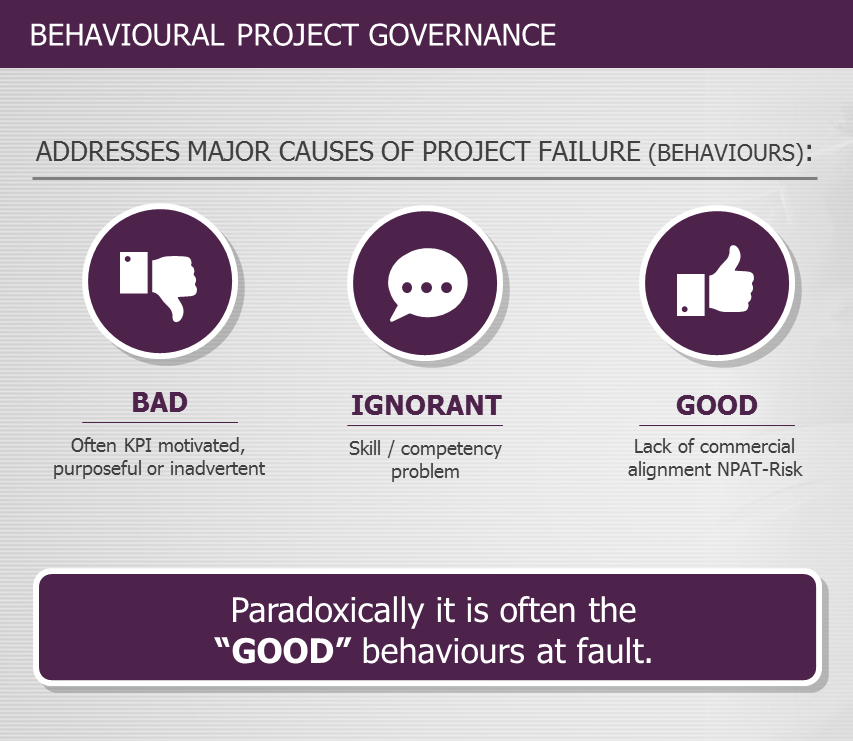Behavioural Science – The ‘Good Behaviour’ Trap
Systems, organisations or processes don’t deliver project outcomes – people do, and we need to manage the real-world behaviour of real people, if we’re going to succeed. Human behaviour works in mysterious ways, responding with a complex combination of logic, emotion and skills to a huge range of motivating factors at any given time.
- Ensuring alignment of individual’s controllable drivers with project goals, and
- Managing specific behavioural responses when they occur.
 Managing individual’s goal alignment can be difficult when they’re outside your organisation, like supplier and customer staff who have company drivers you can’t control. DeliverMyStrategy provides tools to monitor and manage alignment to ensure everyone is motivated to drive for the same outcome.
Managing individual’s goal alignment can be difficult when they’re outside your organisation, like supplier and customer staff who have company drivers you can’t control. DeliverMyStrategy provides tools to monitor and manage alignment to ensure everyone is motivated to drive for the same outcome.
Where individual’s what’s-in-it-for-me instinct motivates them to work in a different direction than the larger project requires, their natural and “good” responses may cause real problems for your delivery.
For example, where key suppliers are undertaking your work at very low margin, their staff may be motivated to delay your work to redirect resources to other, higher-margin work elsewhere to earn their business more money. This “good” behaviour for the supplier can derail your delivery deadlines – unless you take steps to ensure better alignment of everyone’s key objectives and accountabilities.
- “Bad” behaviours resulting from problematic responses to reasonable motivators
- “Ignorant” behaviours, where skills or knowledge are lacking, and
- “Good” behaviours, where unfortunate but reasonable responses are driven by the wrong motivators.
DeliverMyStrategy uses behavioural science to get the most out of all of your resources – even the ones that aren’t entirely yours.
Contact us directly, to find out more…use the Contact Form, email or ring directly, or read more about how we can help:
